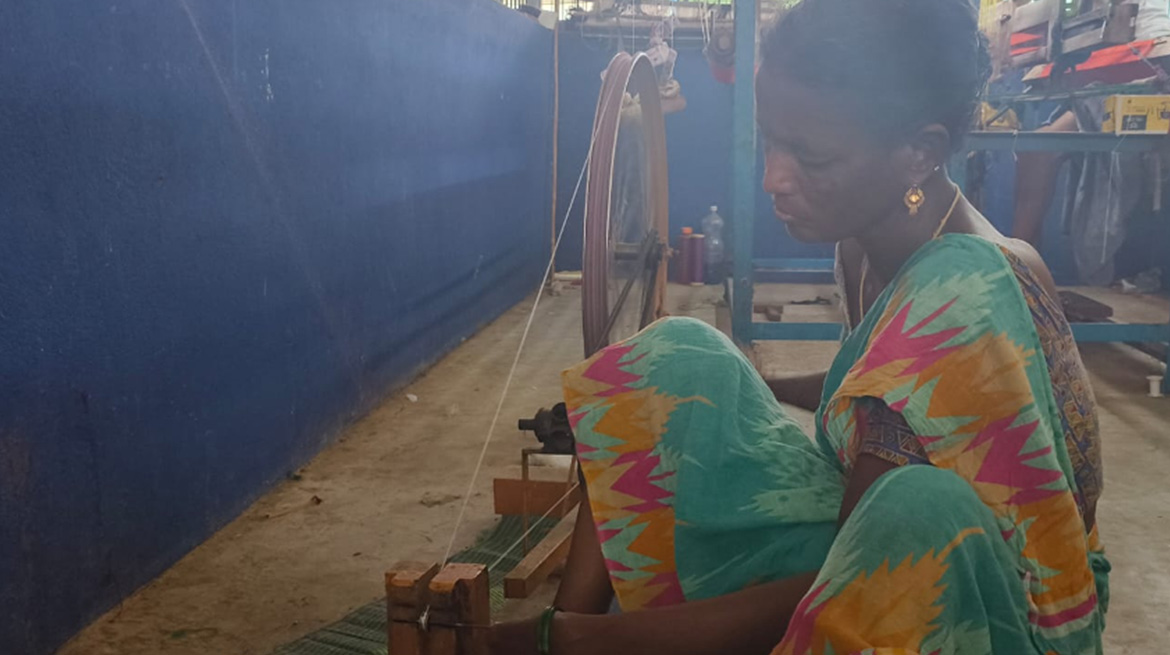In the Threads of Pain
In the handloom clusters of urban Andhra Pradesh, each day begins with two familiar sounds: the soft tone of wooden looms and the crying of aching bodies. During my time working as resident in the urban areas of Guntur district, I saw that how beauty can rise from hardship and how silently pain can settle into everyday life. How it starts and accessible to vulnerable population!
Weaving Capital
Karl Marx’s seminal work, “Das Kapital”, was influenced by his observations of the early textile industry, where initially only men operated the physically demanding looms. With the advent of mechanisation, however, the work became accessible to women and children, leading to their widespread exploitation under capitalist industrial practices.
The Weight Woven into Every Thread
Weaving is not just a livelihood here, it is responsibility. Passed from generation to generation, this craft is central to identity. But behind its beauty lies a cost that often remains unspoken. Most weavers I met were women, resilient and skilled. They sat on mats and floor for long hours, backs curved over looms, fingers dancing, wrists straining. By mid day, necks stiffened. By evening, pain radiated through backs, knees, and ankles. Herbal oils and whispered prayers provided temporary relief. For them, pain wasn’t an interruption it was part of the job.
At first glance, their workspaces seemed happy, looms placed in verandas or in the dark rooms. But this simplicity masked serious ergonomic hazards: poor seating, low lighting, and repetitive, posture- straining tasks.

A Loom and a Life
In one home, a middle-aged woman sat cross-legged in the corner she was occupied for weaving except to cook or fetch water. The loom was her world ! She showed me her hands, stiff with early arthritis. “When my fingers stop, we stop eating,” she said quietly. Another weaver, when asked why she never took breaks, replied with a smile, “Cheyyadam maaku alavatu aipoyindi”. We have become used to working this way.
This mindset extended to younger girls, many of whom had dropped out of school to help their mothers. Their bodies, still developing, already showed signs of repetitive strain injuries. Pain become their routine part without even understand its long-term effects.
The Silent Burden: Musculoskeletal Disorders
Scientific research from different regions found that more than 50% of males and females working in handloom weaving experiencing pain and discomfort in their body parts. Followed by agricultural workers, weaving is the second most common causes of musculoskeletal disorder among all workers. Long hours of repetitive movement and awkward posture lead to work-related musculoskeletal disorders (WRMSDs). Pain in the neck, back, shoulders, wrists, and knees becomes chronic. Still, these conditions going unrecognized and untreated.
Many women continued weaving through pregnancies, injuries, and even fractures. One woman, working with a swollen wrist, told that “mammalni evaru patinchikuntaru”, means who will bother about us!
With limited access to healthcare and low health literacy, most accepted their pain as a natural part of life or aging.
A Thread of Hope: Introducing Ergonomics
During a community health camp, we introduced simple ergonomic solutions through community awareness programme. These were not expensive interventions just basic, accessible changes:
- Raising loom height using bricks to reduce back strain
- Adding cushions to floor seating to reduce the hip pressure
- Using LED task lighting to reduce neck tension
- Encouraging short microbreaks every 20 minutes
- Teaching simple wrist and shoulder stretches in informal group settings
One young weaver returned a week and visited our primary health centre and shared, “Ee saari pani chesakeppudu noppi takkuva ga undi”—this time, the pain was less. The whole team felt very happy for the intervention worked.
Beyond Ergonomics: A Call for comprehensive action
Ergonomics was just the first step. The deeper issue is still persisting, lack of access to affordable healthcare, physiotherapy, and health education about body mechanics. If nothing changes, the younger generation especially girls will inherit not just the craft, but also the pain. Musculoskeletal disorders are among the most under-recognized occupational health issues in India’s informal workforce. In public health, we often focus on sanitation, vaccinations, and disease but rarely do we speak about posture, overuse, and chronic pain in labour intensive settings
Body bleed for every need!
They produce not just cloth it is culture, tradition, and livelihood. Their backs, shoulders, and fingers preserve generations of artistry. And for that, they deserve care.
Hope will not arrive in the form of doctors or high-end machines. It came with bricks, cushions, and conversation. In every thread they weave, there is beauty. But if we look closely, we’ll also see resilience, sacrifice and the possibility for change.
REFERENCES
OSHA guidelines for textile workers Textiles – Overview | Occupational Safety and Health Administration
National Handloom development programme NABARD – National Bank For Agriculture And Rural Development
World Health Organization Musculoskeletal health





